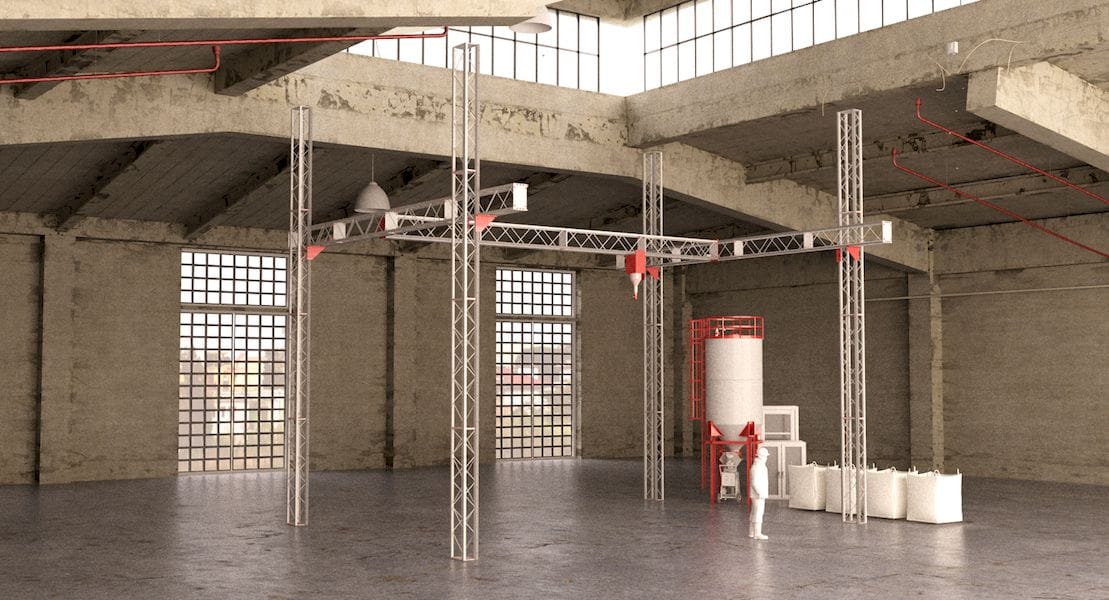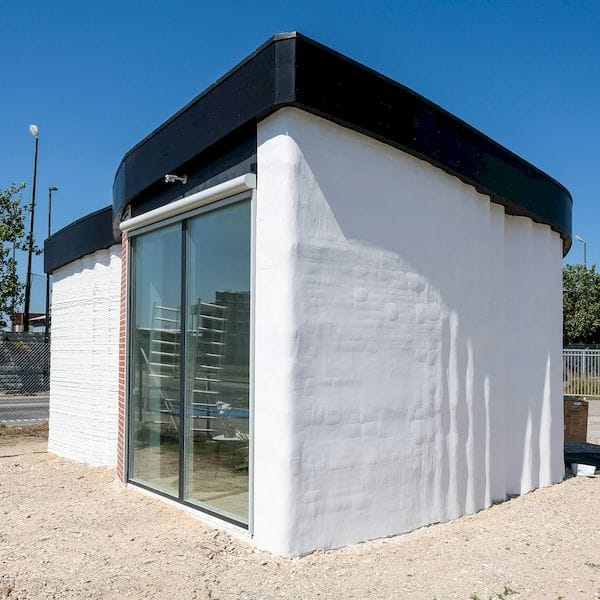
We’re advised that a Belgian organization has selected a large scale 3D construction printer from 3D Printhuset.
Denmark-based 3D Printhuset has been experimenting with 3D printed construction for some time, culminating in a demonstration 3D printed building in Copenhagen and even a 3D construction printing conference.
Their work has been to refine the process of extruding concrete in an efficient manner that permits the printing of actual buildings. Well, at least the concrete walls of a building. There’s still a great deal of work to be done to produce the remaining portions of a building, including electrical, HVAC, windows, surface finishings and much more. But printing the walls does take a huge step towards a fully 3D printed building.

In this arrangement, Belgian Kamp C selected the 3D Printhuset device over others in a public tendered bidding process. As one knows in the EU, public tenders are quite competitive and very thorough in evaluation. Thus being selected in this way suggests 3D Printhuset’s offering is valuable.
The device they selected is 3D Printhuset’s BOD2 construction printer, which they say:
BOD2 offers an unprecedented speed of up to 1 meter per second, 10 times faster than before.
BOD2 version 444 can print buildings up to 9.5m wide by 8.3m tall
And Jakob Jørgensen, Technical manager of 3D Printhuset said:
With such a speed the printer will be extruding almost 10 tons of concrete per hour. This is an incredible amount. However, it remains to be seen how much of this fantastic speed our customers are actually capable of utilizing in practice having in mind that the recipes and materials handling equipment must be capable of matching such speed. So far we have seen prints with a speed up to 30 cm per second, but as our customers become more experienced, we believe they will be able to utilize even more of the speed that our printer offers them.
That’s quite significant.
But who is Belgian Kamp C and what would they be doing with this enormous device?
Kamp C, a former British military transit camp, was purchased by the government and transformed into a centre for sustainable building and housing. Their mission is to “accelerate the transition to a sustainable society”.
As such, they focus on transition from one technology to another, with sustainability in mind. It seems that in this case they wish to provide a demonstration capability to show participants what might be possible with a 3D construction printer.
I’m not particularly sure how extrusion of concrete from a 3D printer is more sustainable than traditional methods of concrete deposition, but it may be that there are unique designs made possible by 3D printing that assist the sustainability of a building.
For example, it might be possible to 3D print a building design that incorporates natural airflows through embedded ducts that significantly lowers the cost to maintain heating and cooling within the building. It may be that Belgian Kamp C may be thinking along these lines.
3D construction printing is so new that no one really knows what is possible and feasible. While there are some 3D construction printers now available, such as those from 3D Printhuset, I think there may be a shortage of creative design to properly leverage the technology.
Hopefully Belgian Kamp C can provide some of this.

